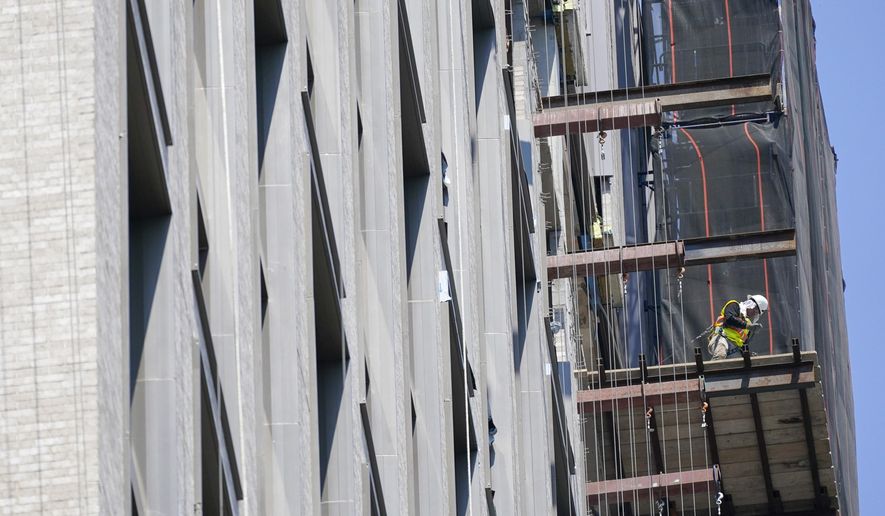The U.S. economy added 528,000 jobs in July, and the unemployment rate fell to 3.5%, far exceeding expectations as President Biden grapples with rampant inflation and insists the economy has not tipped into a recession.
The U.S. Bureau of Labor Statistics said job growth was widespread and led by gains in leisure and hospitality, professional and business services, and health care. The tally brought employment to February 2020 levels, or right before pandemic upheaval and economic restrictions took hold.
“More people are working than at any point in American history. That’s millions of families with the dignity and peace of mind that a paycheck provides. And, it’s the result of my economic plan to build the economy from the bottom up and middle out,” Mr. Biden said in a victory-lap statement.
The new unemployment rate of 3.5% was down slightly from 3.6% in June, matching a 50-year low before the coronavirus hit.
Overall job growth was a major surprise. Wall Street expectations were in the realm of 250,000 jobs for July, and the White House on Thursday said the U.S. was in a transition that might see job growth of 150,000 per month.
“Such strong job growth again contradicts the idea that recession is underway. The unemployment rate dips to 3.5%, on par with the pre-pandemic level,” tweeted Steven Rattner, who served as an adviser to former President Barack Obama’s task force on the auto industry.
Still, the economy is in a tenuous place. Consumers are grappling with rampant inflation, and the Federal Reserve is raising interest rates to try to tame rising prices.
Those moves could have an impact on demand and cool off the labor market this year, meaning future monthly reports won’t be as eye-popping.
The government last week recently reported the gross domestic product sank for a second consecutive quarter when adjusted for inflation.
Mr. Biden acknowledged more needs to get done.
“I ran for president to rebuild the middle class — there’s more work to do, but today’s jobs report shows we are making significant progress for working families,” he said.
The July report found the leisure and hospitality industry continues to shake off the pandemic doldrums. It added 96,000 jobs, notably in food services and drinking places. However, employment in the sector is still below its February 2020 level by 1.2 million, or 7.1%.
Employment in professional and business services grew by 89,000 in July across the industry, including positions in management, engineering, consulting and scientific research. Employment in the sector is 986,000 higher than immediately before the pandemic started.
Health care added 70,000 jobs, notably in ambulatory health care services, hospitals and nursing and residential care facilities. Employment in the sector remains below the pre-pandemic level by 78,000, or 0.5%.
Average hourly earnings for all employees rose by 15 cents, or 0.5%, to $32.27 per hour.
Stocks on Wall Street tumbled before recovering a bit upon the news. Investors are leery because the report means the Federal Reserve might continue its rate hikes to curtail demand and inflation.
The Fed is scheduled to hold a policy meeting in September to consider whether it needs to raise interest rates again to cool things off.
The robust jobs data, however, could give economists some hope the Fed can engineer a soft landing for the economy without sparking a recession or slowing employment.
“This remarkable and broad-based job growth means that for the first time since the COVID-19 pandemic began, total employment has not only surpassed the level of February 2020 but reached an all-time historic high, while the unemployment rate has matched its pre-pandemic, 53-year low,” Labor Secretary Marty Walsh said. “Under President Biden’s leadership, the labor market has fully recovered, and we are creating new jobs through the investments of the Bipartisan Infrastructure Law and more.”
• Tom Howell Jr. can be reached at thowell@washingtontimes.com.




Please read our comment policy before commenting.